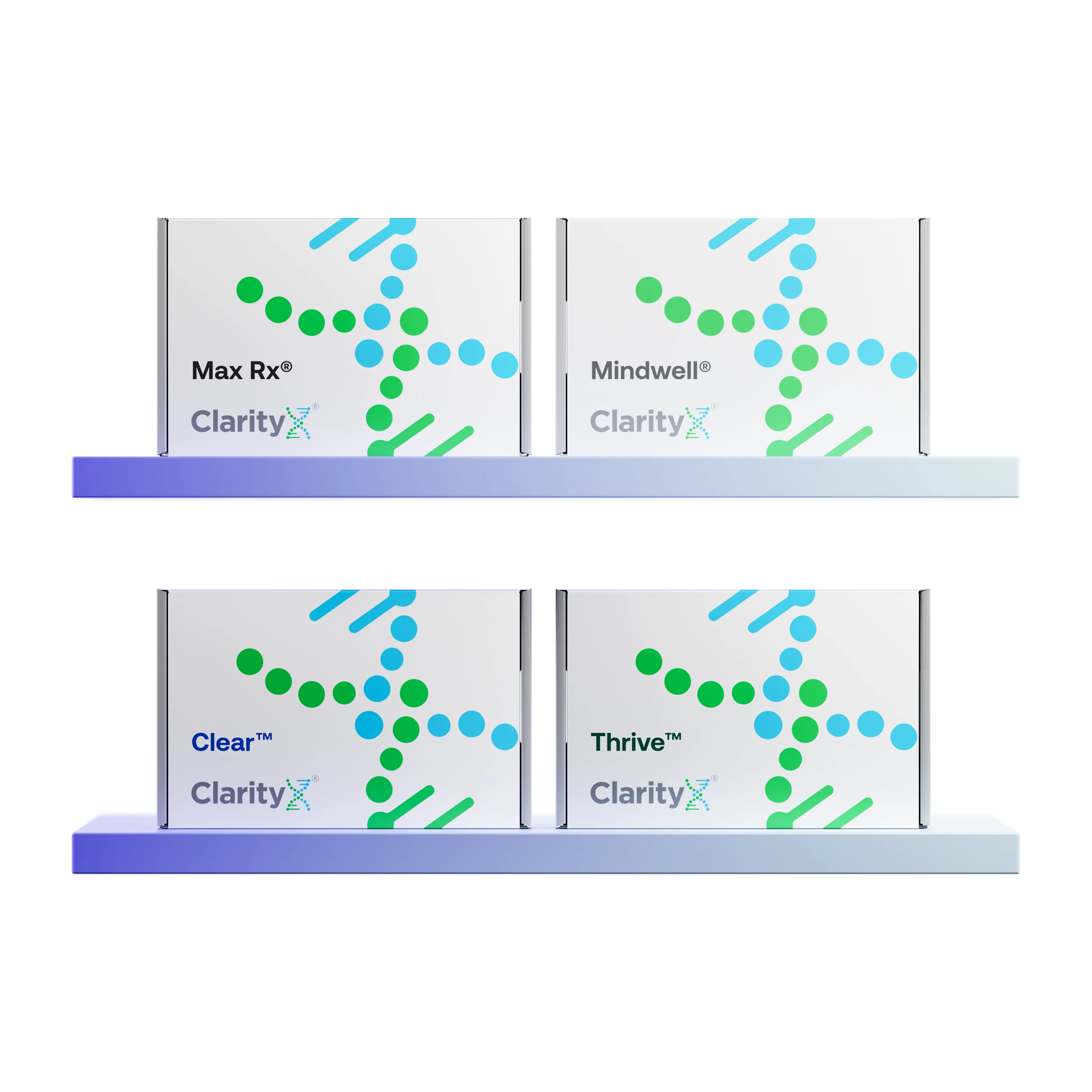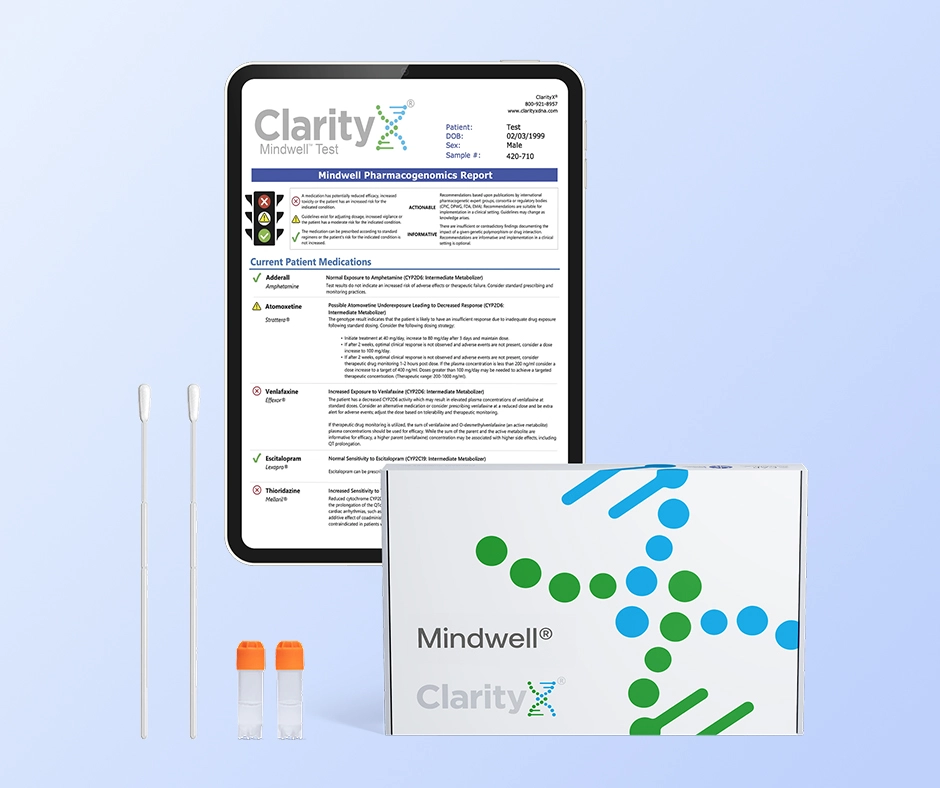Key Highlights
- ADHD, associated with difficulty maintaining focus, hyperactivity, and impulsivity, is a common neurodevelopmental disorder linked to genetics.
- The DRD2 gene, part of the brain's dopamine system, is a candidate gene related to ADHD susceptibility.
- Studies look at how changes in the DRD2 gene may connect to ADHD, including how they might affect the severity of symptoms.
- Environmental factors could change how the DRD2 gene works and interact with genetic factors in ADHD.
Introduction
Attention-deficit/hyperactivity disorder (ADHD) is a condition that develops in the brain and usually shows up in childhood. Attention deficit disorder is a similar diagnosis that manifests without hyperactivity. These conditions affect many people around the world.
ADHD comes with clinical features like trouble focusing, being very active, and acting impulsively. Scientists have found a strong connection between genes and the chance of getting ADHD. One important gene related to this is the DRD2 gene, which affects a dopamine receptor. This article looks at how the DRD2 gene is linked to ADHD.
Understanding ADHD and Its Genetic Links
ADHD is a condition that affects how the brain develops. It involves ongoing issues with paying attention, being overly active, and acting without thinking. These behaviors can disrupt day-to-day life, affecting relationships, school, and work. Research on families and twins shows that people who have relatives with ADHD are more likely to be diagnosed, highlighting a genetic link.
Overview of ADHD and Its Prevalence in the United States
Attention-deficit/hyperactivity disorder (ADHD) is a significant public health issue in the United States, affecting millions of ADHD children and adults with ADHD as they navigate their daily lives. According to the Diagnostic and Statistical Manual of Mental Disorders (DSM), ADHD can impact school work, social life, and overall health. Because ADHD is so common in the United States, it is important to understand what causes it, the risks, and how to treat it. Knowing this information helps deal with this widespread condition.
Data from the Centers for Disease Control and Prevention (CDC) show how widespread ADHD is in the country. The CDC estimates that about 11.3% of children ages 5 to 17 in the United States have been diagnosed with ADHD according to the American Psychiatric Association diagnostic criteria. It also reports that around 8.1% of adults aged 18 to 44 years old have been diagnosed with ADHD during their lifetime. These numbers show how ADHD affects individuals, families, and healthcare in the United States.
The Role of Genetics in ADHD Development
Research shows that ADHD has a strong hereditary aspect. Studies, including adoption, sibling, and twin studies, have looked into the genetics of this disorder and found important information. Scientists are trying to find specific genes that might make someone more likely to have ADHD. They want to understand how these genes can lead to the development of ADHD.
Candidate gene studies are key to understanding the genetics behind ADHD. Much of the current research focuses on genes linked to the pathways for dopamine and serotonin. These neurotransmitters help control attention, impulsivity, and hyperactivity. The dopamine receptor D4 (DRD4) and the dopamine transporter gene (DAT1) are important genes in these studies. Many studies have found a connection between these genes and ADHD.
The Significance of the DRD2 Gene in Research
The DRD2 gene is important because it makes the D2 dopamine receptor. This protein is integral in the brain's reward system and affects many other functions, such as attention, motivation, and movement control. Problems with dopamine signaling can lead to different mental health and brain disorders. Therefore, DRD2 has become a main topic for research that looks into how dopamine signaling connects to neuropsychiatric disorders.
Studying the DRD2 gene helps us understand how it affects brain function. This research could also help us develop better treatments for conditions like ADHD. By investigating the different genetic versions of DRD2, scientists want to create more personalized and targeted therapies for people with ADHD and similar disorders.
What Is the DRD2 Gene?
The DRD2 gene gives the body instructions to make the dopamine receptor D2. This protein plays a key role in the brain's complex dopaminergic system. Dopamine signals are critical for many brain tasks. Dopamine receptors, including the D2 receptor that the DRD2 gene codes for, help control how dopamine signals are sent and received in the brain.
The DRD2 gene is essential for how our brains react to dopamine. It affects how well dopamine binds to receptors and how strong the responses are. This gene is especially important in parts of the brain linked to reward, motivation, and movement.
Changes in this receptor gene, such as single-nucleotide polymorphisms (SNPs), might change how the dopamine receptor works. These small changes can greatly affect dopamine signaling. They can also influence a person’s risk for disorders like ADHD.
Historical Perspective: Discovery of DRD2's Role in Brain Functions
The study of DRD2 started with important research showing that dopamine helps with movement and how we control it. Early findings showed that dopamine is key to managing motor behavior, which sparked interest in its impact on other brain activities. Later research continued to show that dopamine plays a role in controlling movements.
As scientists learned more about disorders that affect brain development, they started to look into how dopamine might relate to the etiology of ADHD. They noticed many people with ADHD have trouble with how they move. This led researchers to think that the dopamine pathway, including the DRD2 gene, might be linked to the development of ADHD and warrants further studies.
DRD2 Gene and Its Connection to ADHD
Many studies have looked at how the DRD2 gene relates to ADHD. They focus on the genetic variability in this gene and how these differences might link to the risk of getting ADHD. Researchers use association studies to find certain genetic variations in DRD2 that are more common in people with ADHD than in those who do not have the disorder.
Looking into these genetic links helps us understand the complex relationship between genetics, brain function, and ADHD.
Investigating the Genetic Correlation Between DRD2 and ADHD
Genetic studies are important in finding connections between changes in the DRD2 gene and the genetic risk factors associated with having ADHD. These studies usually compare genetic markers, like specific SNPs, in the DRD2 gene between groups of people who have ADHD and those who do not. Researchers have worked hard to explore these links, and their findings may show that variability in DRD2 is associated with ADHD risk.
Association studies have become a key part of this research. They focus on identifying specific DRD2 gene variations that might affect a person's chances of developing ADHD. By using well-planned experiments and statistical tests, scientists try to find clear links between certain DRD2 variants and an ADHD diagnosis.
How Variations in the DRD2 Gene Affect ADHD Symptoms
Variations in the dopaminergic genes, like DRD2, may change how well dopamine works in the brain. These variations can affect the number of dopamine receptors, how well they bind, or how dopamine is taken back into the cells, which mainly depends on the dopamine transporter gene.
Research shows that less dopamine signaling, which may come from changes in DRD2 and other dopaminergic genes, could lead to ADHD symptoms related to dopaminergic dysfunction. These studies show that dopamine plays a key role in attention, impulse control, and executive function. These functions are often weaker in people with ADHD. Additionally, changes in how DRD2 works, which are affected by genetic differences, have been linked to varied brain activity in individuals with ADHD compared to those who do not have the disorder.
Comparative Analysis of DRD2 Gene Studies
Many studies have shown a link between the DRD2 gene and ADHD. They provide important information about how genes can affect the chance of developing this condition. Researchers have done many studies using various methods and groups of people to deepen our understanding of this link.
These studies, which include candidate gene and association studies, work to find specific changes in the DRD2 gene that may increase ADHD susceptibility.
Key Studies Highlighting the DRD2-ADHD Relationship
Many studies show a strong link between specific changes in the DRD2 gene and a higher chance of genetic susceptibility to developing ADHD. One of the most examined changes is the TaqI A polymorphism (rs1800497). This variant is related to the number and quality of dopamine receptors. Research suggests that people with the A1 allele may face a greater risk of ADHD.
In addition to this, other genetic studies point to more changes near the DRD2 gene related to ADHD. For example, one study found that a certain haplotype, which is a mix of alleles on the same chromosome, appeared more often in people with ADHD compared to those without it. This finding hints that a mix of genetic changes within the DRD2 gene might together increase the risk of ADHD.
Environmental Factors Interacting with the DRD2 Gene
Genetics can play a significant role in ADHD susceptibility. However, environmental risk factors are important, too. Lifestyle choices can affect how genes work, changing a person’s chances of getting ADHD. Environmental risk factors may also interact with DRD2 gene variations. This interaction can either increase or decrease the effect of these genes.
For example, if a child faces negative experiences like trauma or neglect, it can change how dopamine works in their brain. These changes can interact with DRD2 gene variations. This might raise the risk of developing ADHD.
The Impact of Lifestyle on DRD2 Gene Expression
Emerging research shows that our lifestyle choices can also affect how we express the DRD2 gene. This means there is an ongoing interaction between our genes and our environment. Some important factors include diet, exercise, and stress management. These can all influence how dopamine signals in our body and affect the activity of the DRD2 gene.
For example, studies say that regular exercise can boost dopamine production and increase the number of dopamine receptors in the brain. This could change how the DRD2 gene is expressed. Adding regular exercise as part of a complete method for managing ADHD might help improve DRD2 expression. Also, eating a balanced and healthy diet is linked to better dopamine signaling.
Interaction Between DRD2 Gene Variants and Environmental Triggers
Recent studies show that certain environmental factors might work with DRD2 gene changes. This combination could raise the chance of getting ADHD or make symptoms worse.
One interesting area of study is how DRD2 gene changes relate to early life stress. Research has suggested that people with specific DRD2 changes might be more hurt by stress in their early years. This stress can affect brain growth and raise the risk of ADHD. For instance, children with these gene changes who face difficulties early in life may have more difficulty focusing. Additionally, exposure to harmful substances like lead and pesticides is another environmental factor that may interact with DRD2 gene changes.
The Future of ADHD Treatment: Implications of DRD2 Research
Ongoing research on DRD2 could greatly change how we treat ADHD. It may help us create more personalized and effective therapies. As we learn more about the link between DRD2, dopamine, and ADHD, researchers aim to develop treatments that focus on the disorder's core problems.
Personalized Medicine Based on Genetic Profiling
In healthcare, personalized medicine is becoming very popular. This approach is focused on each person's unique needs. Pharmacogenomic testing can help us examine a person’s specific genes, which allows for better treatment options for ADHD.
When healthcare providers use someone’s genetic information, they may be able to improve ADHD treatment. For example, if a genetic test shows that a person with ADHD has a certain CYP2D6 variant, providers may change their approach to medications like atomoxetine.
How Genetic Information Can Empower Patients
In the changing world of mental health, genetic information is becoming a helpful tool for people with ADHD and their families. Knowing your genetic traits can help people make better health choices. By learning about their genetics, individuals can take action to manage their condition and find the right support.
When considering treatment options, your genetics can also play a vital role in determining which medications will be best suited for you. A simple test can help reduce the trial-and-error process associated with finding the right medication. Find out more by visiting www.clarityxdna.com
Conclusion
Understanding the connection between the DRD2 gene and ADHD can help us better predict the needs of individual patients. Genetic research may lead to significant improvements in how we manage ADHD.
Frequently Asked Questions
What is the DRD2 gene and why is it important for ADHD?
The DRD2 gene gives instructions to create a dopamine receptor in the brain. This gene is important for ADHD. It helps control attention, motivation, and behavior, which are all impacted by ADHD. Scientists look at the DRD2 gene to learn how it affects ADHD susceptibility.
How does genetic testing for the DRD2 gene work?
Genetic testing for DRD2 involves a DNA sample, often from a saliva swab or blood test. The test looks at certain changes in the DRD2 gene, which have been associated with ADHD in research studies. However, genetic testing alone cannot diagnose ADHD.
Can changes in the DRD2 gene predict ADHD severity?
Studies show a possible connection between changes in the DRD2 gene and ADHD. However, right now, research cannot clearly state how severe ADHD might be based only on these gene changes. ADHD comes from complex interactions between many genes and environmental factors.
References:
https://www.ncbi.nlm.nih.gov/pmc/articles/PMC8511701/
https://www.ncbi.nlm.nih.gov/pmc/articles/PMC161723/
https://www.ncbi.nlm.nih.gov/pmc/articles/PMC7046577/
https://www.nature.com/articles/s41380-018-0070-0
https://www.ncbi.nlm.nih.gov/pmc/articles/PMC7613776/
https://www.ncbi.nlm.nih.gov/pmc/articles/PMC8006930/
https://www.ncbi.nlm.nih.gov/pmc/articles/PMC8511701/
https://www.ncbi.nlm.nih.gov/pmc/articles/PMC9871920/
https://www.cdc.gov/nchs/data/databriefs/db499.pdf
https://www.nimh.nih.gov/health/statistics/attention-deficit-hyperactivity-disorder-adhd
https://pubmed.ncbi.nlm.nih.gov/25462494/
https://link.springer.com/article/10.1007/s12035-012-8278-5





